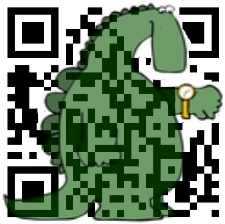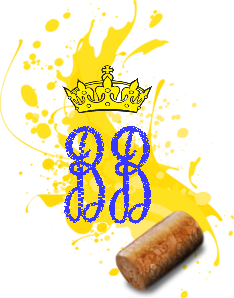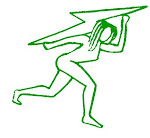Der Anlass meines
Artikels ist diesmal etwas ungewöhnlich, es ist eine Entmündigung. Oh, pardon,
politisch korrekt heißt das heute in Amtsdeutsch Betreuung, aber genauso wenig
wie aus dem Gummiknüppel ein possierliches Werkzeug wird, weil man es
euphemistisch zum Einsatzstock erklärt, ändert die Umbenennung etwas daran was
der staatliche Akt der Entmündigung ist: Es ist das ultimative Aberkennen des
Rechtes frei über sich und sein Schicksal entscheiden zu können, es ist in der
Wirkung schlimmer als ins Gefängnis zu kommen und wird in seiner Konsequenz und
Wirkung allenfalls noch von einer Tötung übertroffen, der aber wenigstens ein
eindeutiges Verbot im Grundgesetz gegenübersteht.
Wer sich
einem nicht gewünschten Betreuungsverfahren gegenübersieht, wird schnell
feststellen, dass die üblichen Schutzmechanismen des Rechtsstaates für ihn
nicht mehr gelten, während in einem normalen juristischen Verfahren ein Urteil
immer nur an ein Gesetz und eine Handlung gebunden sein muss („keine
Strafverfolgung ohne Gesetz“), so kommt es im Betreuungsverfahren auf
subjektive Einschätzungen des Zustandes eines Menschen an. Und da interessiert es auch nicht besonders, dass
der zu Betreuende vielleicht ganz anderer Meinung ist, denn diese andere
Meinung kann gerne als Indiz herhalten, dass jemand Betreuung braucht. Wer sich
mal mit seinem Arzt gestritten hat, der wird feststellen, dass man sehr schnell
sehr unterschiedlicher Meinung über den eigenen Zustand sein kann. Nur was im
normalen Alltag allenfalls dazu führt, dass man keinen gelben Schein bekommt
oder ein bestimmtes Medikament nicht kaufen darf, führt in einem Betreuungsverfahren
zum Verlust der eigenen Entscheidungsfähigkeit und damit, wie ich meine, zu
einem Verlust eines Teiles des Mensch-Seins.
Man muss
sich nur einmal die Ohnmacht vorstellen, die jemand erleben muss, der ein
solches Verfahren gegen seinen Willen erleben muss. Nicht nur die Ohnmacht
nichts falsch gemacht zu haben und dennoch massiver bestraft zu werden als
jeder Gewaltkriminelle, auch die Ohnmacht sich jeden Tag anhören zu müssen,
dass das ja nur zum Besten des Betreffenden sei. Wer unter diesen Umständen
tatsächlich seine Sinne beieinander behält, dem muss man zu seinem festen
Charakter beglückwünschen.
Nun ist das
alles sehr theoretisch und man kann sich fragen was das Ganze nun mit Gedanken
zum Rechtsstaat zu tun haben soll. Die Antwort ist ein Name: Cornelius Gurlitt.
Cornelius Gurlitt ist der „Kunstsammler“ bei dem vor einiger Zeit einige Kunstwerke durch
die Staatsanwaltschaft „aufgefunden“ wurden (obschon diese vorher niemand
vermisst hatte). Und weil man schon mal da war, hat man die Bilder halt mitgenommen
und inzwischen bemüßigt sich der bayrische Justizminister an diese Bilder mit
nicht nur fragwürdigen sondern mit Methoden die einem Schurkenstaat gut zu
Gesicht stünden den Herrn um seine Bilder zu erleichtern. Ich habe zu diesem
skandalösen Vorgehen schon einen Artikel geschrieben.
Ich schrieb
dort „Aber wir wären nicht in der deutschen Politik, wenn man nicht noch einen
drauf setzen könnte.“ Und habe dann einiges zu diesem „Justizminister“
geschrieben. Aber ich muss zugeben, ich habe damals nicht die Phantasie
besessen mir vorzustellen, dass das noch nicht das Ende der Fahnenstange war.
Es geht inzwischen weiter. Denn das Amtsgericht München hat bekannt gegeben,
dass es Cornelius Gurlitt auf Antrag von Ärzten unter Betreuung gestellt hat.
Vulgo, es hat ihn vorläufig entmündigt.
Als ich das
gelesen habe war ich erst einmal eine ganze Weile sprachlos. Ich habe es
gegoogelt, weil ich es mir einfach nicht vorstellen konnte. Aber es war keine
Zeitungsente, der Artikel ist an diversen Stellen zu finden.
Klar, wird
man jetzt einwenden, kann ja alles Zufall sein. Alles andere wäre ja auch in
unserem Lande undenkbar. Vielleicht braucht der Mann ja „Betreuung“. Kann ja
alles seine Ordnung haben. Nun, ein arger Zufall ist es schon, dass es gerade
jetzt zu einer Zwangsbetreuung kommt. Zwangsbetreuung ? Ja. Er hat den Antrag
nicht selber gestellt und das sagt schon eine ganze Menge aus, denn das Procedere
ist deutlich einfacher, wenn jemand einen solchen Antrag selber stellt. Hat er
aber nicht. Und ein Gutachten gibt es auch nicht, sonst würde das Gericht nicht
darauf bestehen, dass diese „jetzt schnellstmöglich eingeholt werden“.
Nun sollte
das ganze seine Richtigkeit haben, aber ich muss sagen, es macht mich doppelt
und dreifach nervös. Zum einen daher, weil das ganze Entmündigungsprocedere
schon für sich eine fragwürdige Sache ist. Es ist irgendwo noch einzusehen,
einen Menschen auch gegen seinen Willen „zu betreuen“, wenn der Betreffende
sich oder andere gefährdet. Aus der Psychiatrie ist derlei bekannt, auch wenn
das dort weniger unter Entmündigung subsummiert wird, als darunter einen
Menschen auch gegen seinen Willen einzuweisen. Aber die Gefährdung von sich
oder anderen ist schon eine sehr hohe Hürde und ich denke die wenigsten, die
unter Betreuung fallen, stellen für sich oder andere eine Gefahr dar. Ich kenne
Cornelius Gurlitt nicht, aber aus dem wenigen was er in Interviews gesagt hat
und was sonst über ihn berichtet wurde, scheint der Mann nicht in diese
Kategorie zu fallen. Schlimmer noch finde ich aber, dass jemand, der gerade
noch dafür bekannt wurde mit dem Staate eher auf Kriegsfuß zu stehen von eben
jenem nun entmündigt wird und obendrein einen staatlichen Betreuer verpasst
bekommt.
Ich darf
mal folgende Wette machen: Die Betreuung von Herrn Gurlitt wird in seinem Namen
eine ganz salomonische Lösung für die Werke finden. Sein explizit und laut
erklärter Wille, dass er die Werke zurück haben will, wird dabei als
Altersstarrsinn verklärt werden. Vielleicht gibt man den Werken einen Titel wie
„Cornelius Gurlitt Sammlung“, damit kann er doch zufrieden sein ? Und selbst
wenn so etwas ganz so dreistes ausbleiben würde, wie wahrscheinlich ist es,
dass der Betreuer erst einmal rechtliche Schritte gegen den Staat Bayern
einläutet und die Bilder schnellstmöglich zurückverlangt, was vermutlich im
Moment angebracht wäre?
Und das Beste
ist, wenn die Bilder erst „verschenkt“ sind, kann Gurlitt dagegen nicht einmal
klagen, selbst wenn er jemals aus dieser Betreuung herauskäme. Hat alles seine
Ordnung. Gustl Mollath hat sieben Jahre in der Psychiatrie verbracht, bis die
schiere Menge an Verfahrensfehlern seine Entlassung erzwang. Die Entscheidungen
die in dieser Zeit für ihn getroffen wurden sind unabänderlich. Das ist bei
Cornelius Gurlitt nicht anders, nur das er vermutlich keine sieben Jahre Zeit
hat.
Mir wird
angst und bange wenn ich das lese. Die unglaubliche Ohnmacht, die jemand
empfinden muss, der sich dieser staatlichen Maschinerie gegenübersieht, ist
überwältigend. Der Mann ist formal stinkreich, aber sein ganzes Geld kann
ihn nicht retten. Ich frage mich
wirklich, wem das Geld zufallen wird, denn ein Mensch unter Betreuung wird
sicher nicht eine Milliarde Euro ausgeben dürfen. Ich vermute es wird an den
Staat fallen.
Und
wenn Sie jetzt eine
Pointe oder Forderung erwarten, lieber Leser, dann muss ich Sie
enttäuschen:
Ich habe keine. Ich bin eher ratlos. Mir fehlen die Beweise einen
Skandal zu
belegen (oder einen der noch größer wäre, als der, der schon vorher
gewesen
ist). Aber alleine der Schatten, der jetzt auf der Sache liegt, macht
doch sehr
nervös. Mich zumindest. Ist es von einem Justizminister, der offen gegen
den
Rechtsstaat opponiert so weit zu einem Gericht das einer Entmündigung
zustimmt,
weil der Betreffende sein Eigentum nicht hergeben will? Es ist sicher
ein Weg,
aber ist der so weit? Vor einigen Monaten hätte ich mir auch nicht
vorstellen
können, dass ein bayrischer Staatsanwalt Kunstwerke beschlagnahmt ohne
einen
Rechtsgrund dafür zu haben. Oder das ein Richter einräumt, dass er das
zentrale
Dokument der Verteidigung nicht einmal gelesen hat. Ich kann und will
mir nicht im Stile einer Verschwörungstheorie vorstellen, dass jemand
hier aus politischen Gründen seiner Mündigkeit beraubt wird. Es darf
nicht sein. Aber der Schluss, dass etwas nicht sein kann, weil es nicht
sein darf, ist oftmals nicht richtig.
Wie
dem auch immer genau sei, ich biete die Wette an, dass der staatliche
Betreuer eher am Interesse des Staates orientieren wird. Wer immer mir
widersprechen will, darf das gerne tun, wir werden sehen, wer Recht
behält.
Llarian


























































































































